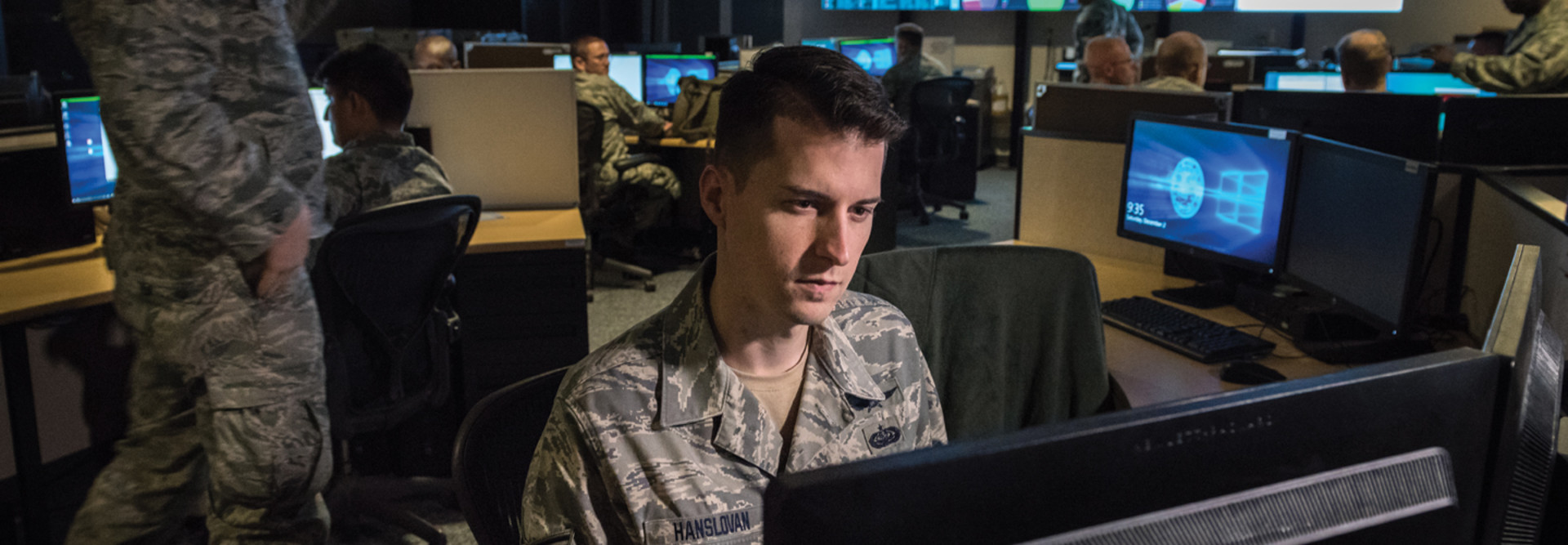Remote Learning Platform Gets a Boost from Automation
Now used by the Army as well as the Air Force, the program proved beneficial when the COVID-19 pandemic began and service members’ movements were restricted. Multifactor authentication kept EVTP secure for remote users and improved automation eased configuration and response to problems.
The technology meets hyperconverged requirements as well as government standards for zero trust cybersecurity. It also supports any learning management system and/or communications medium a customer would want to use.
While some agencies may want to use open-source technology to build the system, commercial off-the-shelf technology is also compatible. The Air Force’s solution uses hardware from Cisco, Dell, F5 and Rubrik; software comes from Microsoft, VMware, Red Hat and Cisco.
EVTP’s foundation is a private cloud that is built to be multi-tenant and dynamically scalable, as well as dynamically provisioned on the fly. For instance, a typical remote environment would take three to five days to provision, using a two- or three-person team.
The first time we provisioned EVTP, the provisioning had to happen over a weekend. Automation meant that it took just two hours.
The instructors uploaded a file with the class roster, and the system created user accounts, issued permissions, built out the desktops and created a learning platform for each student. Eliminating manual input also cut back on “fat-finger” typing errors such as misspelled student names.
Classroom as a Service Environment Allows Interaction
Our goal was to give students the same look and feel no matter their location. When they log in, the dashboard and everything they do to log in is the same. The virtual machines and the assets they would have access to will differ based on what they are learning.
But their data is still there, and how they launch and access certain toolsets will be the same. That way, they’re not wasting time on how to relearn the environment and can focus on the curriculum.
The curriculum itself mirrors what happens in the real world. When the Air Force’s curriculum was being developed, instructors brought in members of the squadrons that would use the new training, and those airmen helped develop the tools and techniques in the curricula to be as close to reality as possible.
For students, EVTP also eliminates the need for IT tickets when they’ve got a problem within the environment. The instructor has administrative privileges within his graphical user interface, can see any problems that students are having — and can fix them promptly.
EVTP gives administrators the ability to monitor each student’s desktop. They can look for cheating, or if students have a problem, they can raise their hand, and the instructor can attempt to correct the issue.
The program’s multizone wireless capability makes the training solution versatile enough that it covers cross-domain access solutions and can enable remote access into classified networks should that become necessary for teleworkers.
LEARN MORE: Cross-domain enterprise services fit into federal zero-trust plans.
Air Force and Army Give New Service Members a Head Start
The Air Force’s original version of EVTP was built to be used anywhere within the facility where the class was based. Army’s Version 2.0 enhanced on-premises capabilities so that soldiers could access training from anywhere, at any time, on any device, with a BYOD capability that met DOD Common Access Criteria and also integrated with modern learning technology that is still evolving.
The initial concept was around cyber training — to create a framework that supports any kind of training environment. It could expand to flight simulators, and there is talk of Air Force weather using the platform as part of their training environment to certify meteorologists. The FBI and the Department of Homeland Security have expressed interest.
It’s best utilized not only in a streaming context, but in a training environment where students need practical, hands-on lessons. In EVTP, students will engage in a realistic environment to build, validate or emulate a process.
Many of them will be 18-year-olds new to the service who are learning what they’ll see on their first deployment. For homework, they’ll configure devices, and then see what happens when they break those devices.
And then they’ll be able to take something that they learned in an abstract world, with training tailored to what they’ll see when they’re deployed. That will enable them to hit the ground running and provide value to their service branch on their first day.
This article is part of FedTech’s CapITal blog series. Please join the discussion on Twitter by using the #FedIT hashtag.













